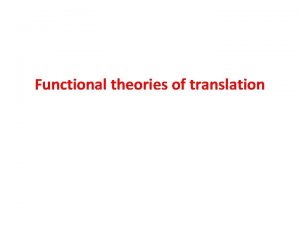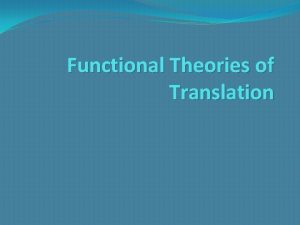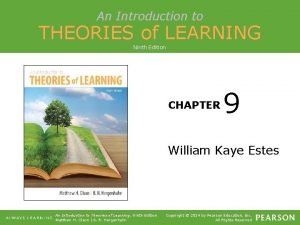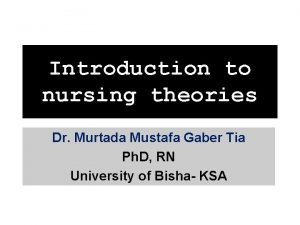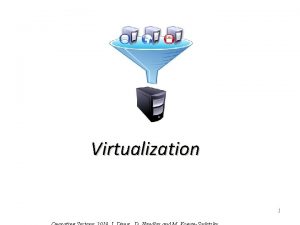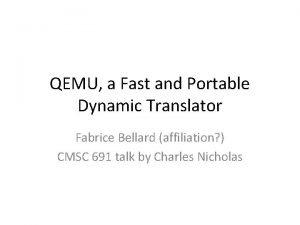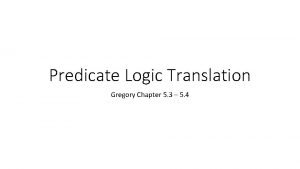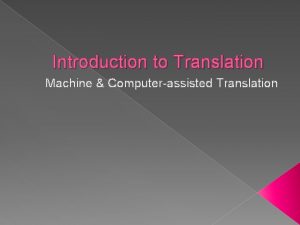Introduction to Translation Translator Translation Theories What is











- Slides: 11

Introduction to Translation, Translator & Translation Theories

What is Translation? � Translation: a rendering of a text from one language into another. Also, the product is called “Translation”. � Translation is considered a bilingual or multilingual process.

What is Translation? � Translation can be written or oral. Oral Translation is called Interpretation. � Interpretation is divided into two types: 1 - Consecutive Interpretation: the interpreter waits the speaker to stop then starts translating. 2 - Simultaneous Interpretation: the interpreter and the speaker talk at the same time.

Who is a Translator? � All Communicators are translators. Discuss. Communicators (readers, listeners, monolinguals or bilinguals) receive signals containing messages encoded in a communication system which is not identical with their own. They try to analyze and deconstruct the signals in order to reconstruct them.

Who is a Translator? � Communicator Vs. Translator! 1 - Translator: a bilingual mediating agent between monolingual communication participants in two different communities. 2 - S/he decodes a message in one language and re-encodes it in another.

Features of a Translator S/he must, first of all, be a subject specialist so that the content of the original text is communicated accurately, clearly and naturally. � A translator must be very proficient in both the source and target languages. � A translator must be familiar with the basic principles of translation theory and practice. � A good translator must have empathy for his or her target readers. �

Features of a Translator A translator must be committed and disciplined. A good translator must be aware of the culture of both the source and target language readers. � An effective translator should have all the necessary translation tools such as monolingual, bilingual and subject dictionaries, thesauri, terminology lists, a computer, a printer etc. � An effective translator must be aware that writing and translating involve similar features. � �

Translation Theory � General Definition: The study of proper principle of translation. � Translation theory recognizes that different languages encode meaning in differing forms, yet guides translators to find appropriate ways of preserving meaning, while using the most appropriate forms of each language. � Translation theory includes principles for translating figurative language, dealing with lexical mismatches, rhetorical questions, inclusion of cohesion markers, and many other topics crucial to good translation.

Translation Theory Form Vs. Meaning There are two competing theories: � 1 - The predominant purpose is to express as exactly as possible the full force and meaning of every word and turn of phrase in the original. This theory is called Formal Equivalence. 2 - The predominant purpose is to produce a result that does not read like a translation at all, but rather moves in its new dress with the same ease as in its native rendering. This is called Dynamic Equivalence.

Dynamic Vs. Formal Equivalence � Dynamic equivalence: sometimes used when the readability of the translation is more important than the preservation of the original grammatical structure. Used mostly in literature. � Formal equivalence: fidelity to the grammatical structure of the language equals greater accuracy. Used in diplomatic and business setting. � However, both equivalences should generate an effect on the reader of the target text similar to the effect on the source text reader. It should appear like a writing rather than a translation.

How to have a proper translation � The translator should understand perfectly the content and intention of the author whom he is translating. � Read all the sentences or the text completely to give the idea that you want to say in the target language. � The translator should use the cultural words of the country he’s translating for. � The translator should avoid the tendency to translate word by word, because it would destroy the meaning of the original and ruin the beauty of the expression. � The translator should bear in mind the people to whom the translation will be addressed and use words that can be easily understood.
